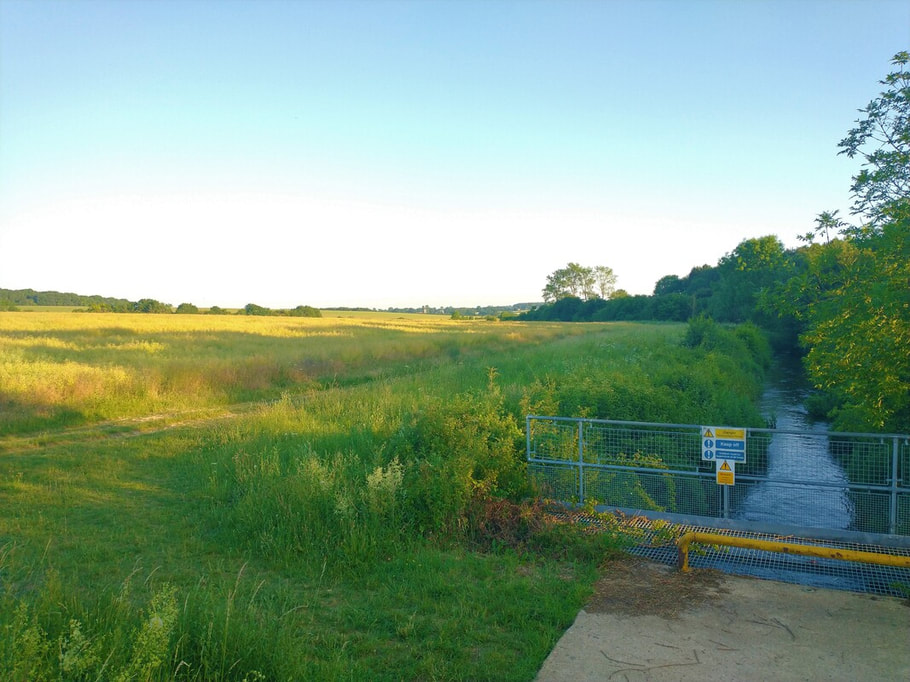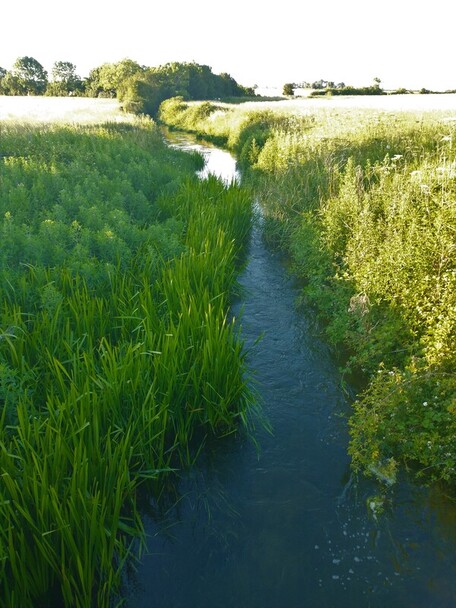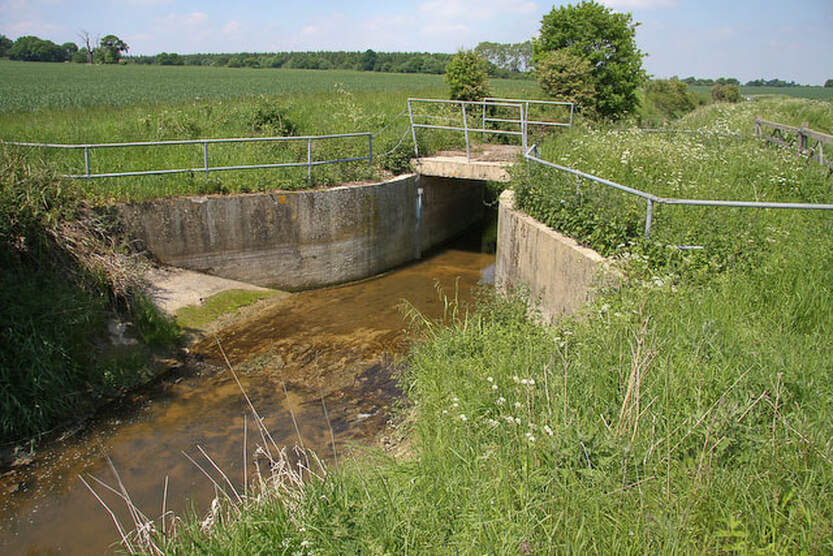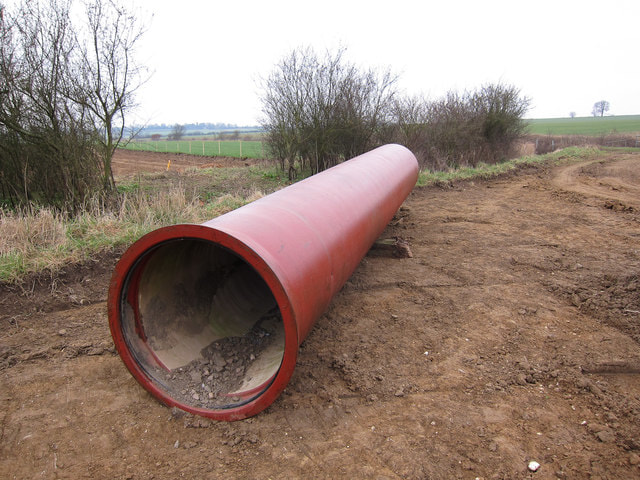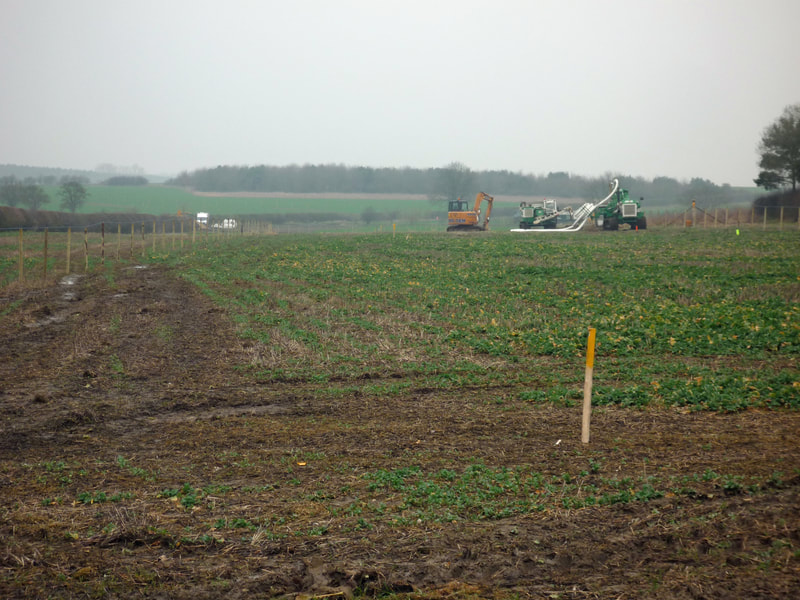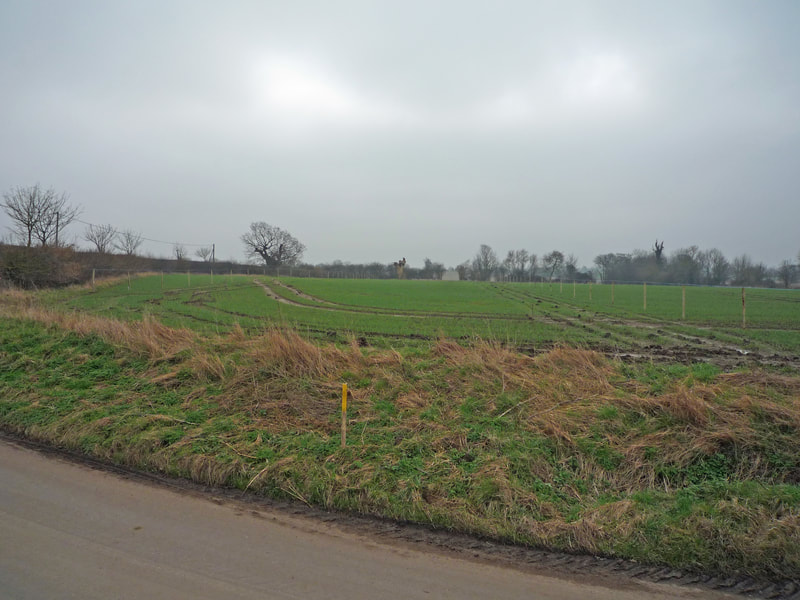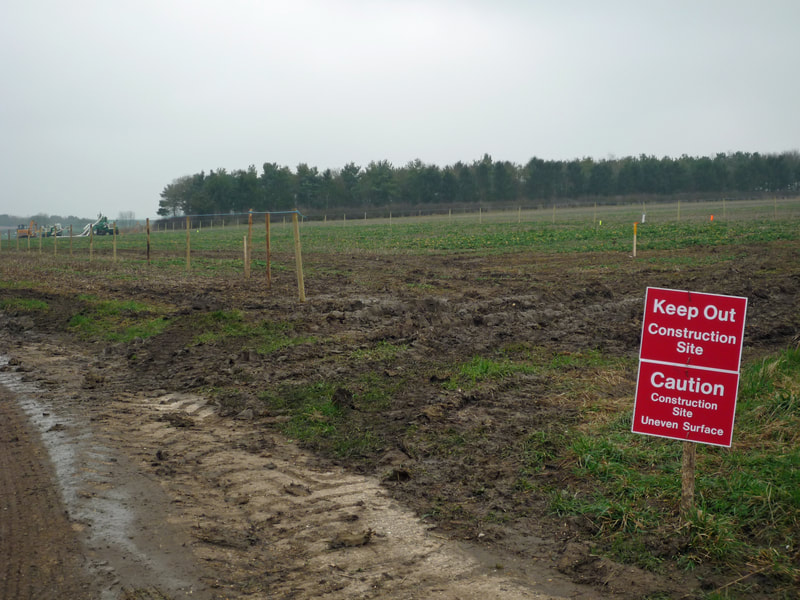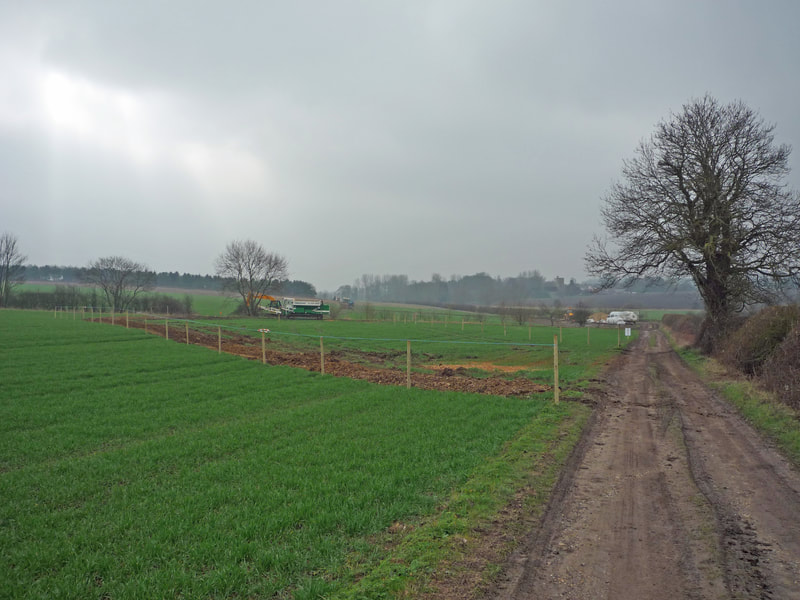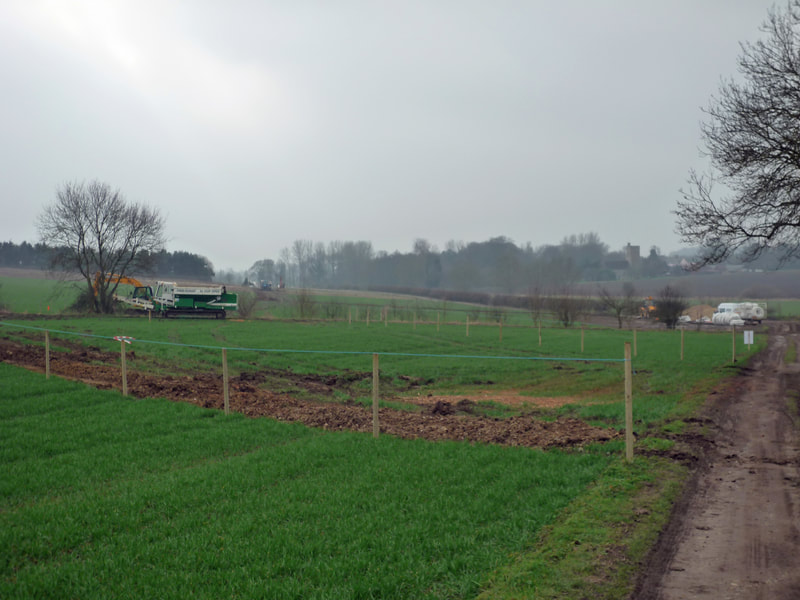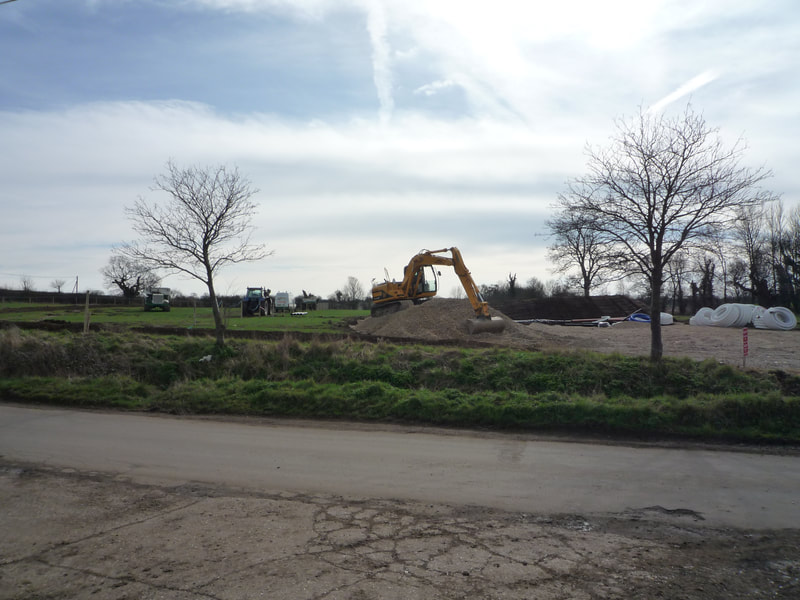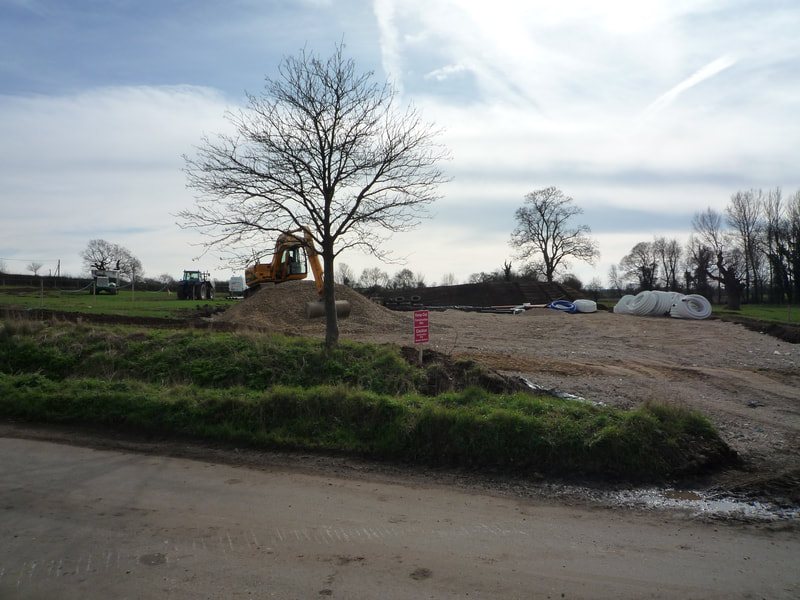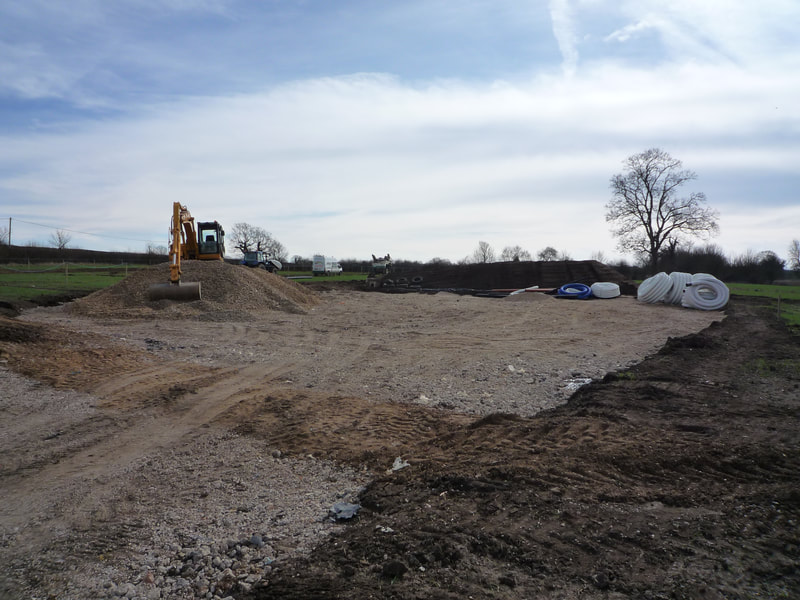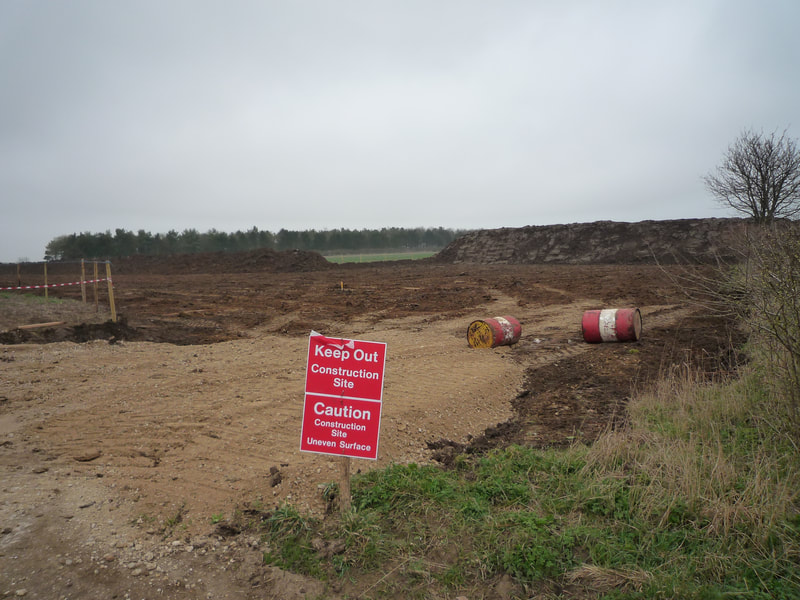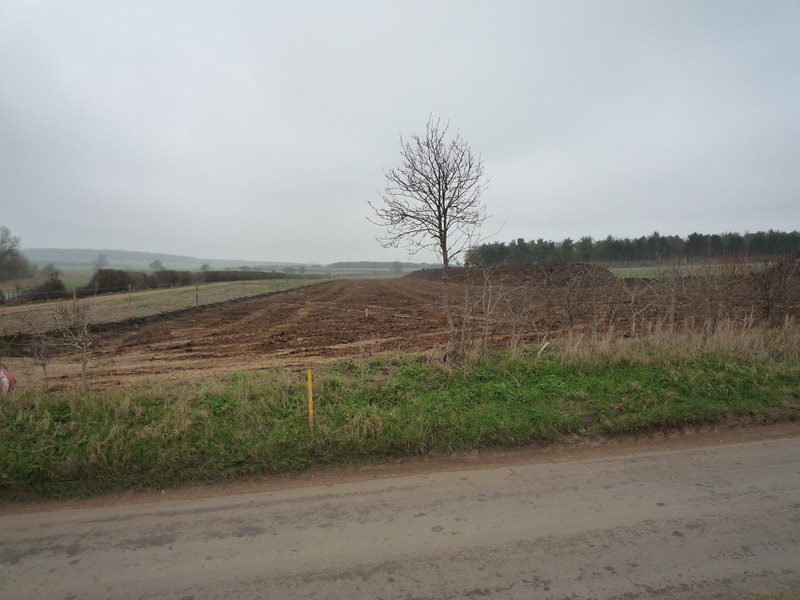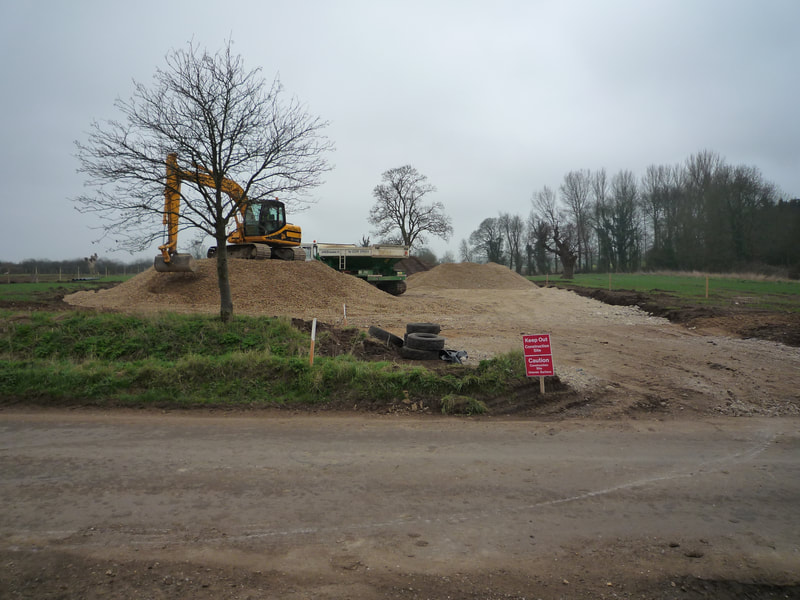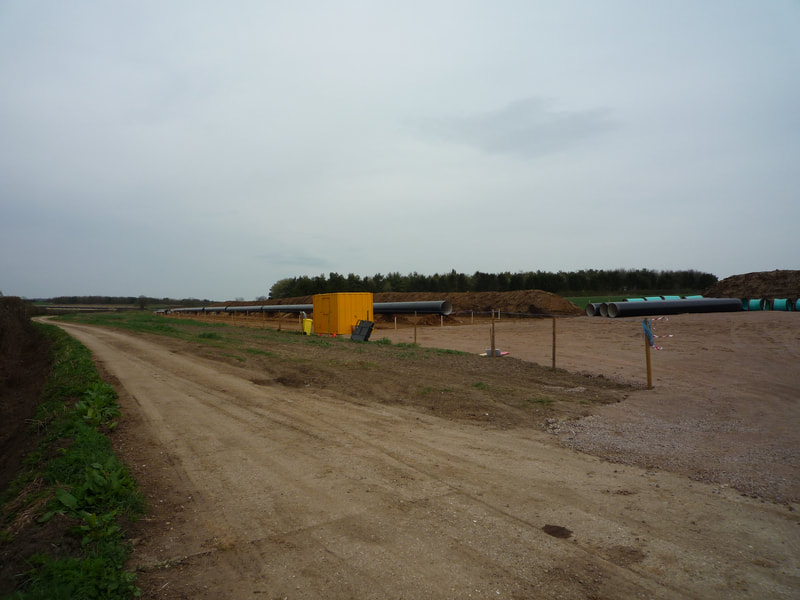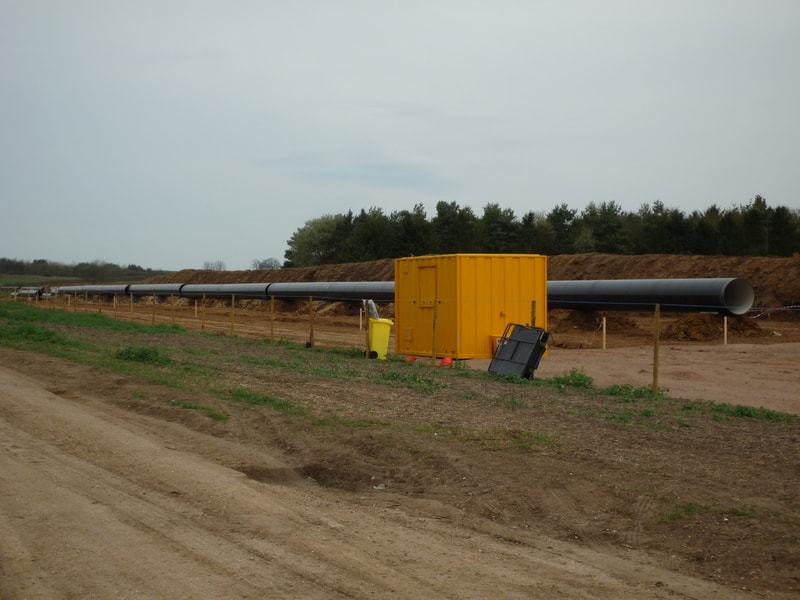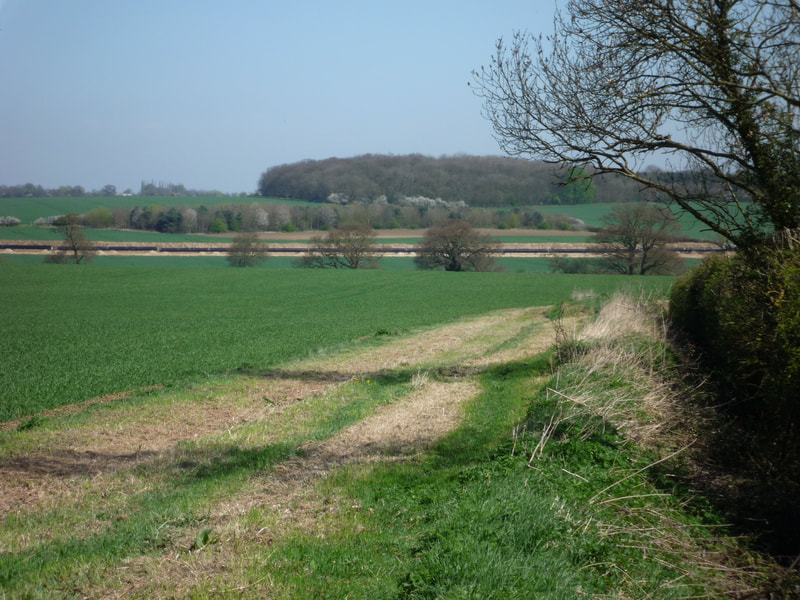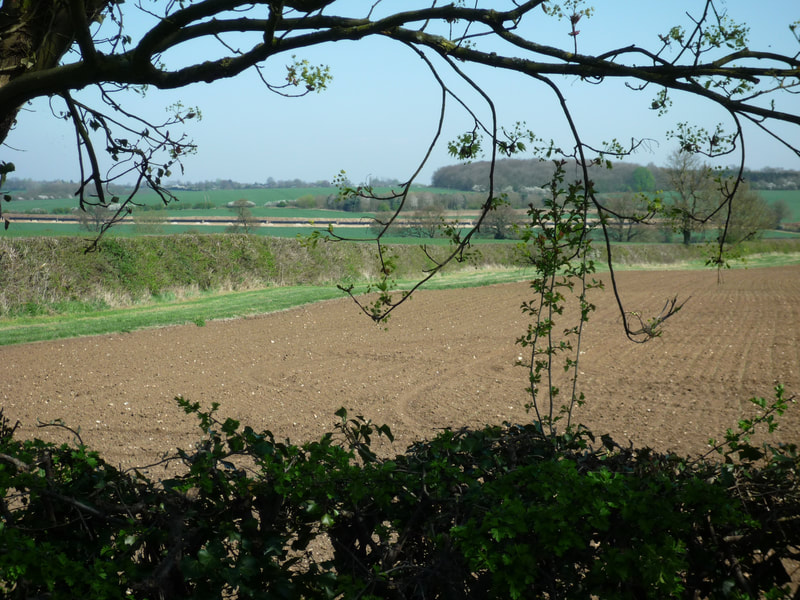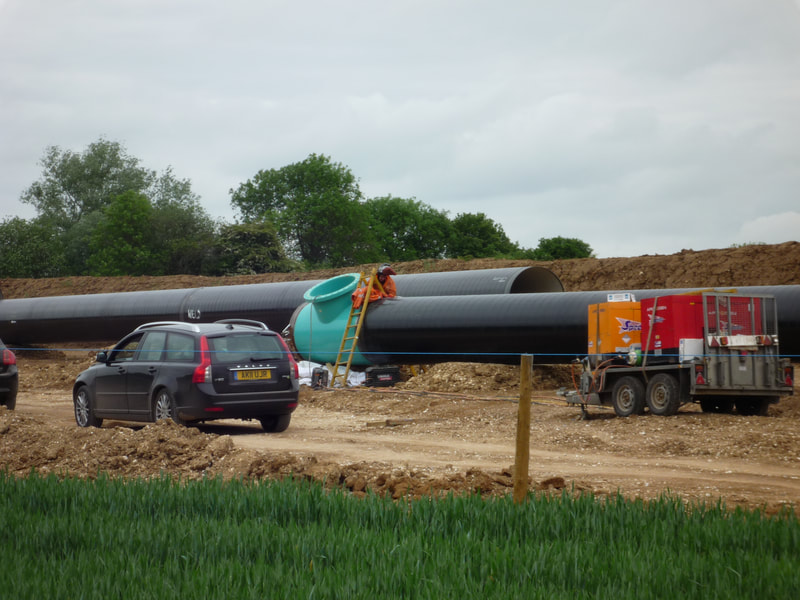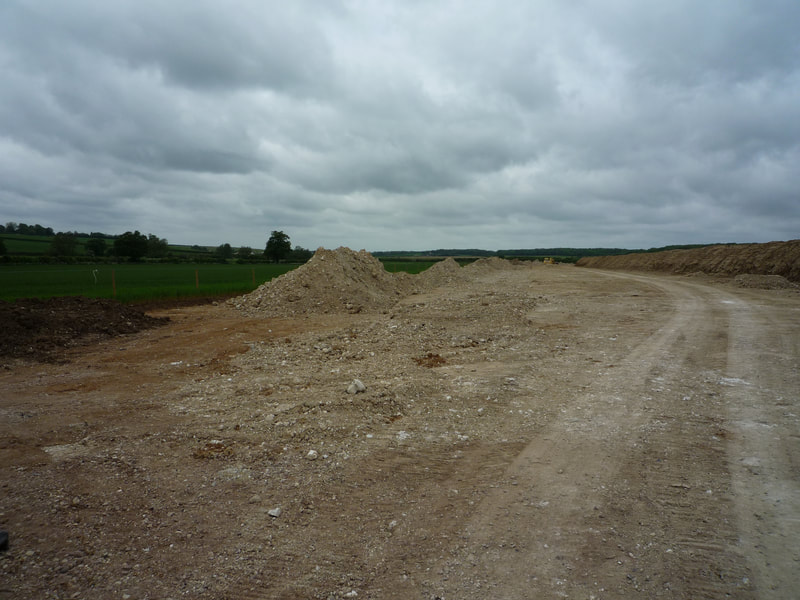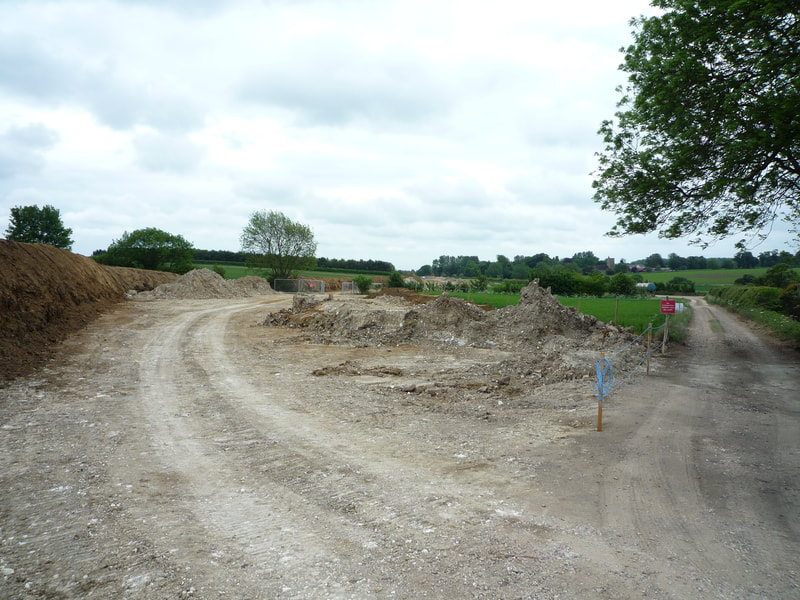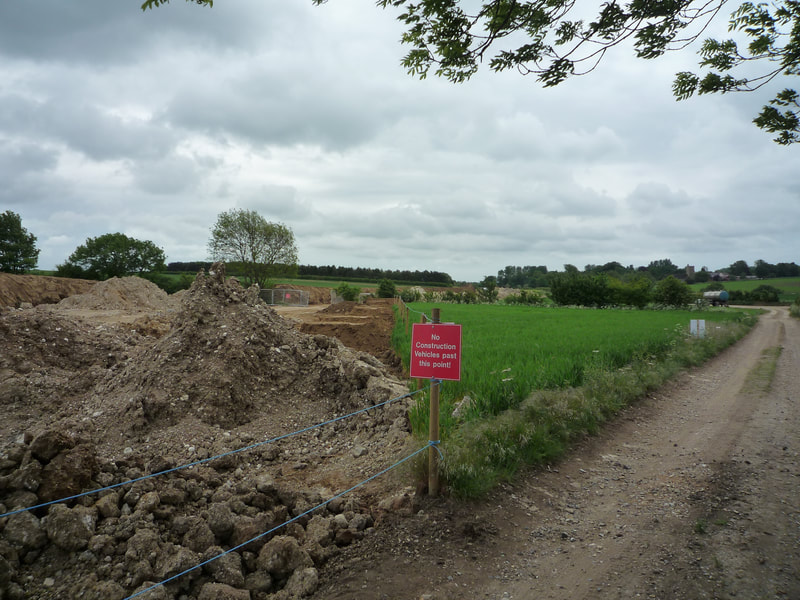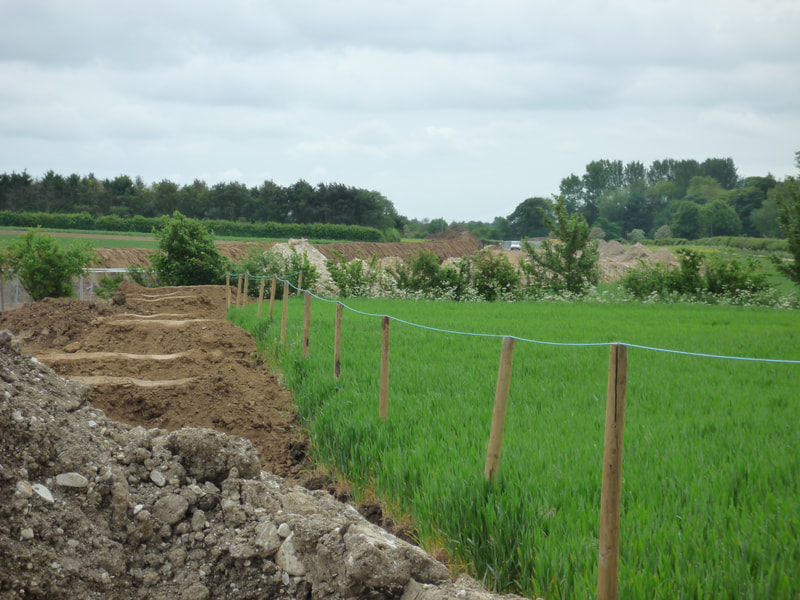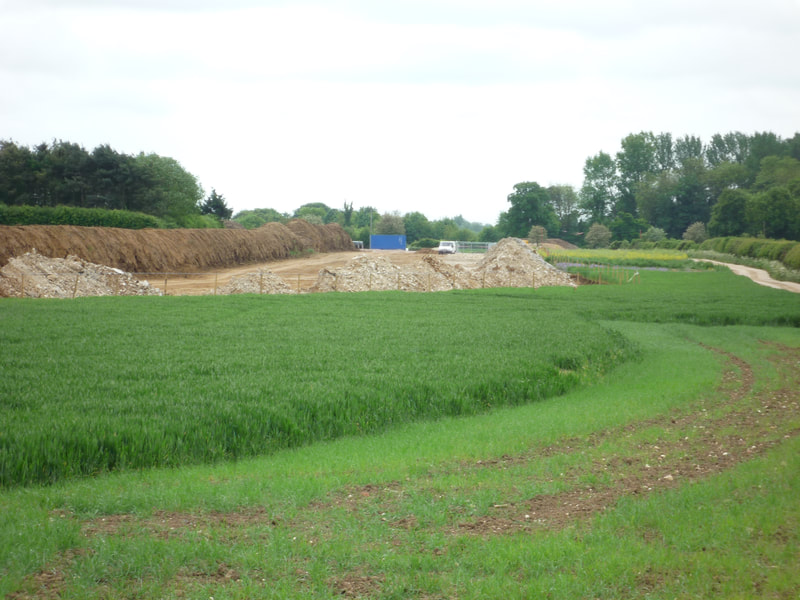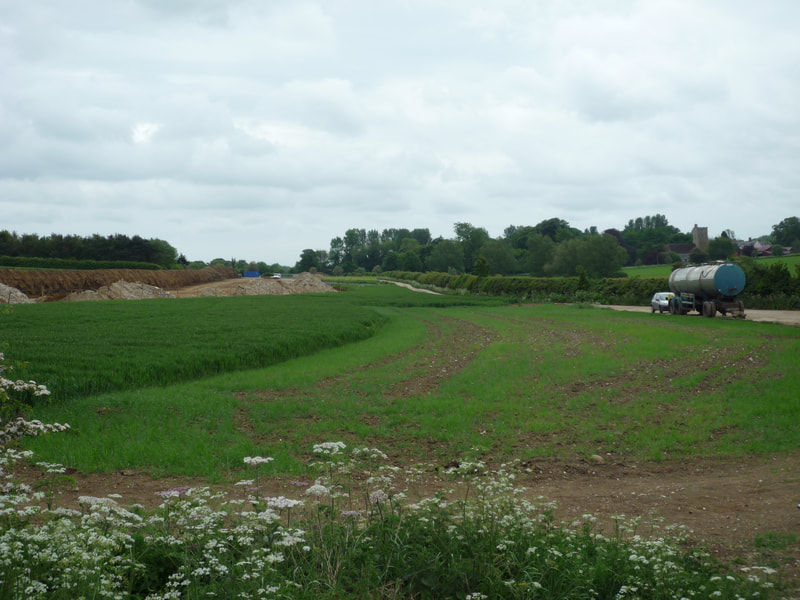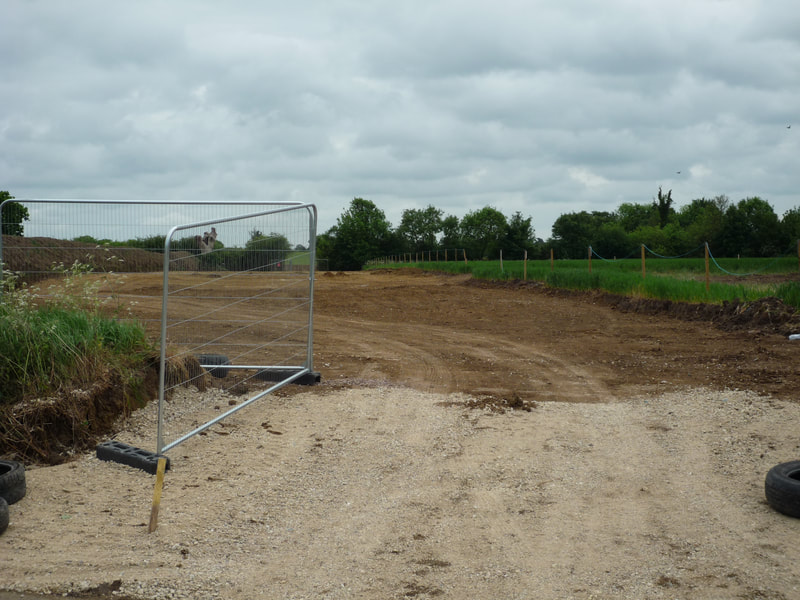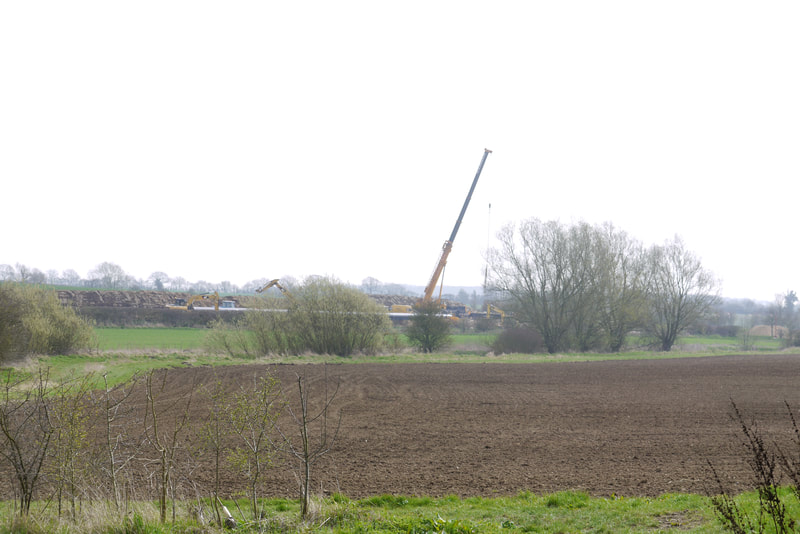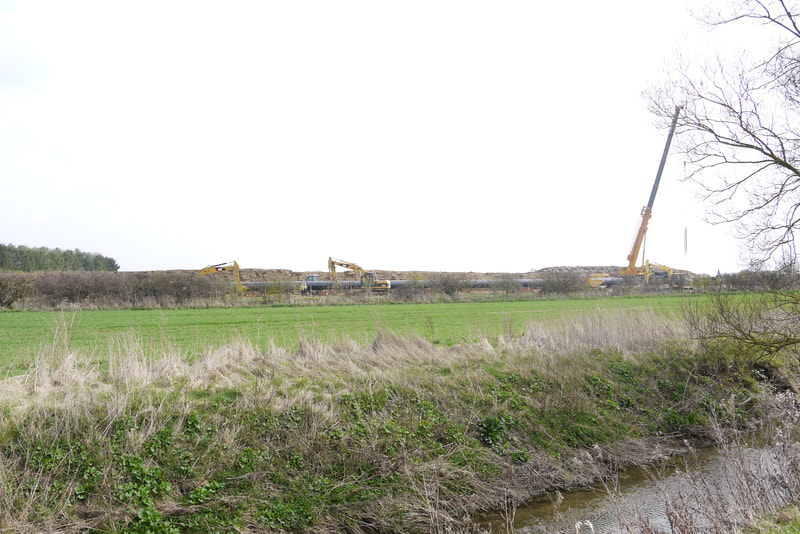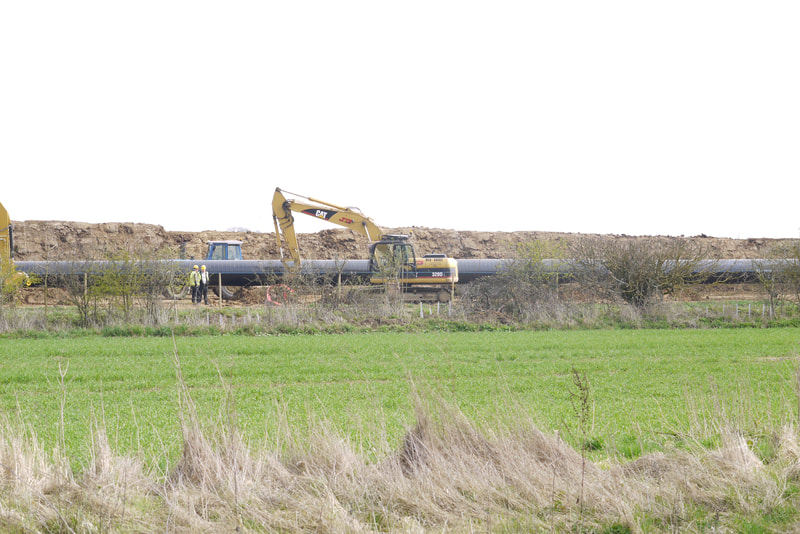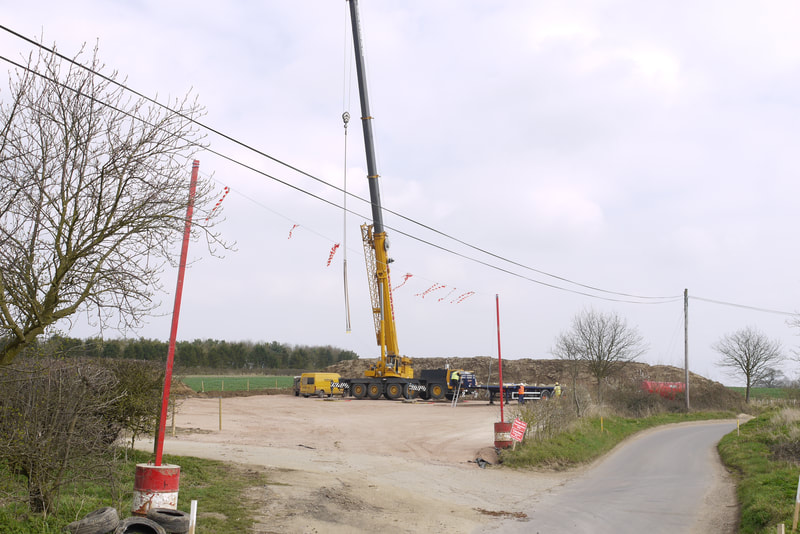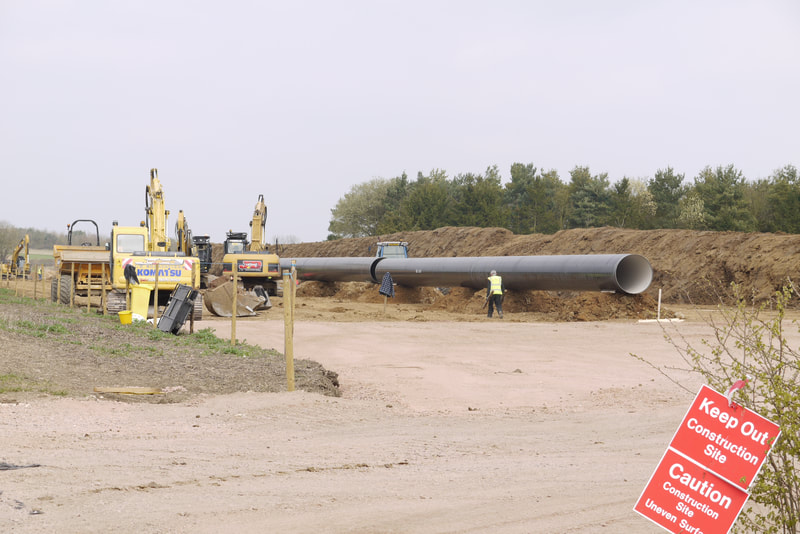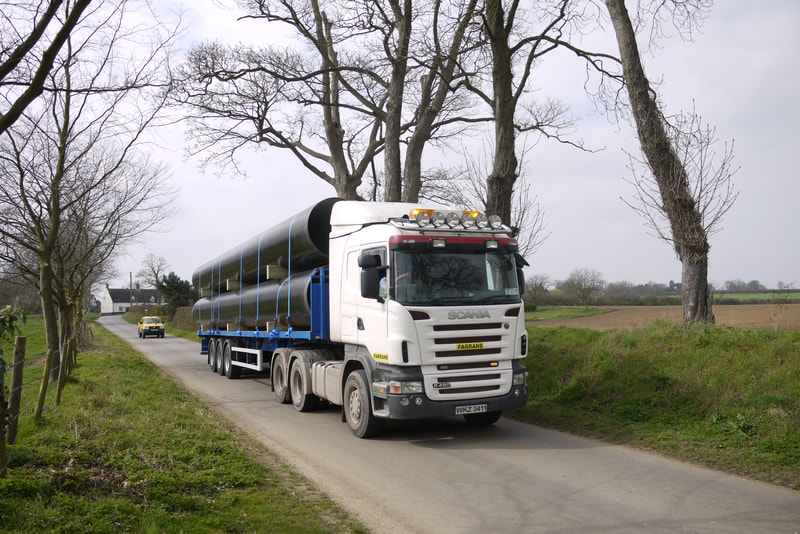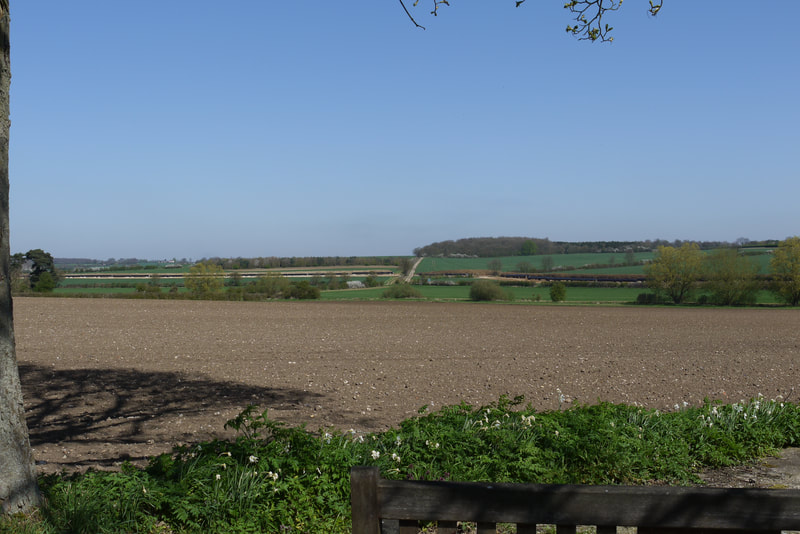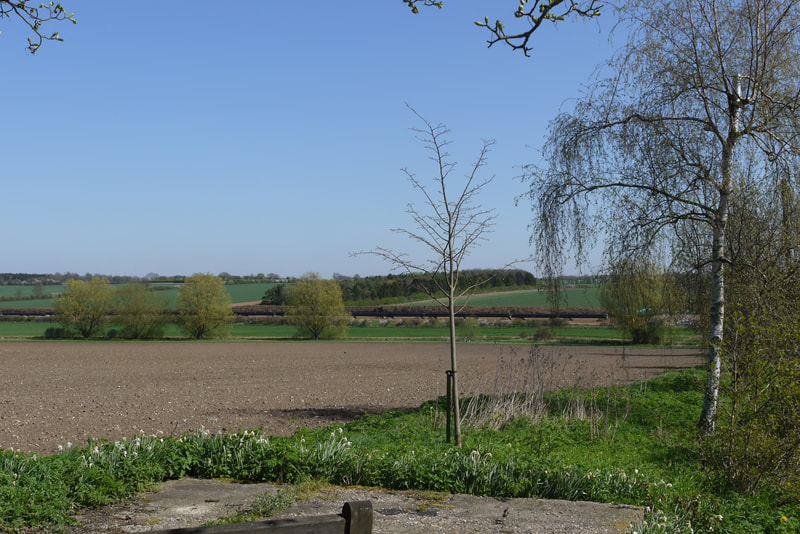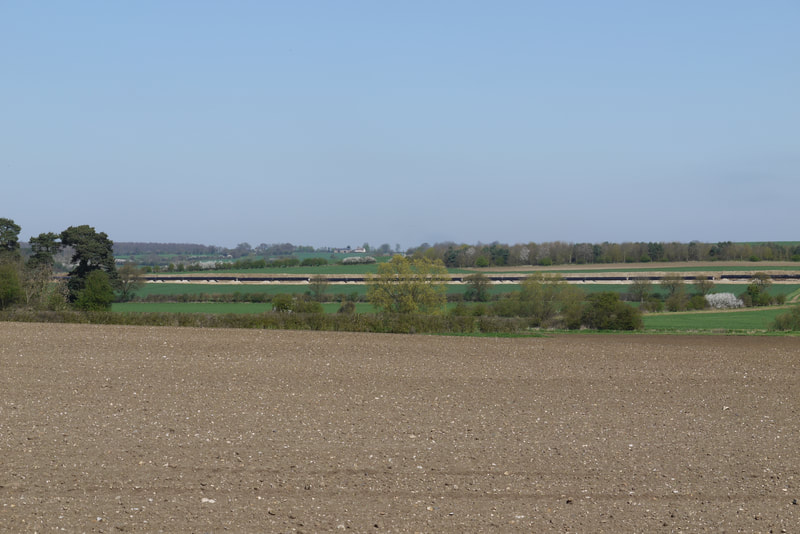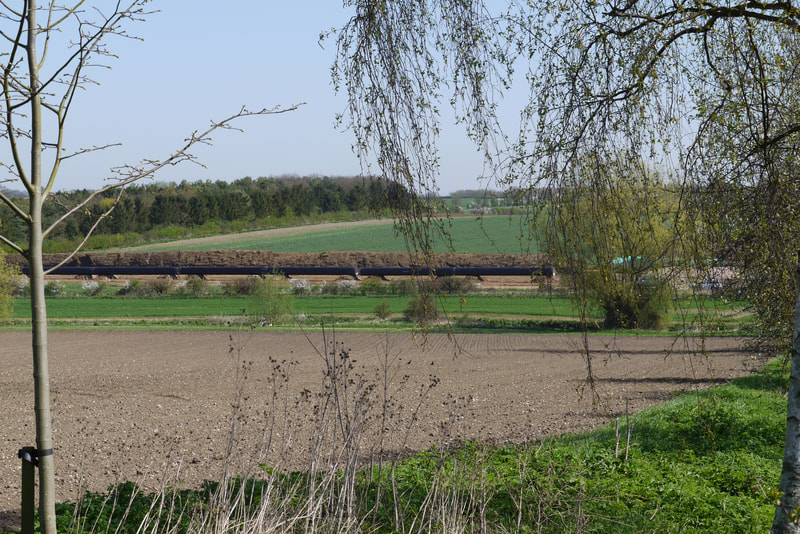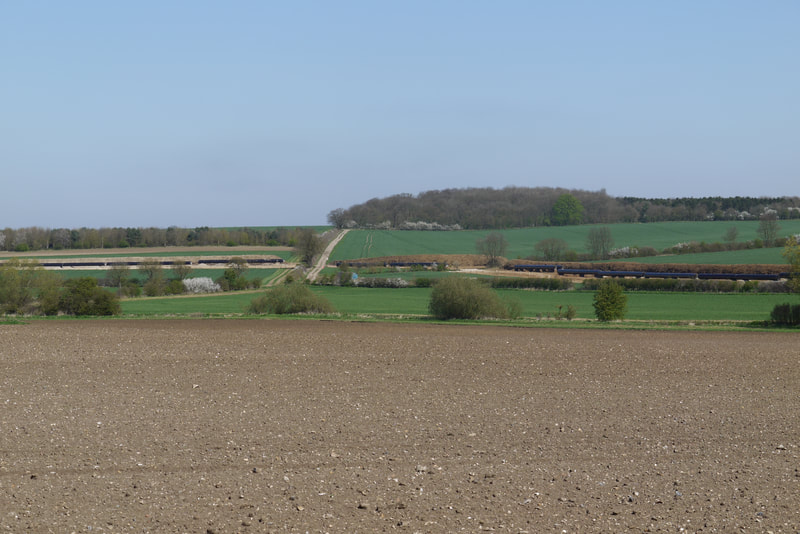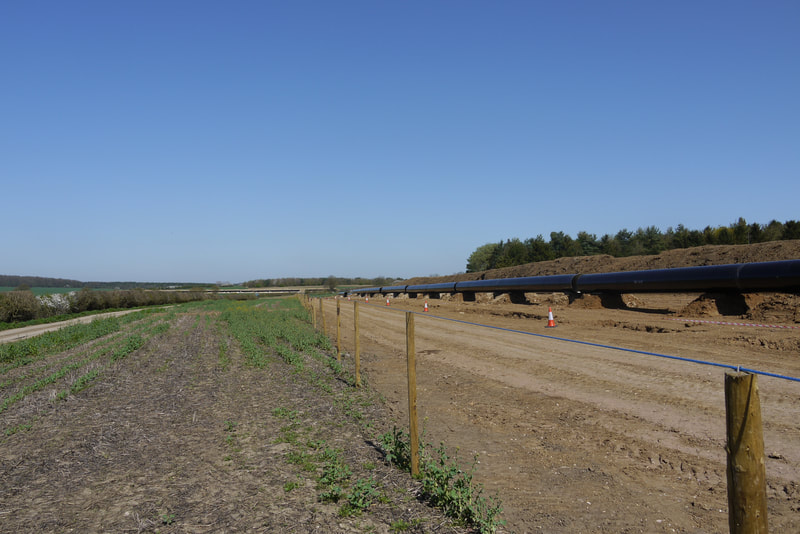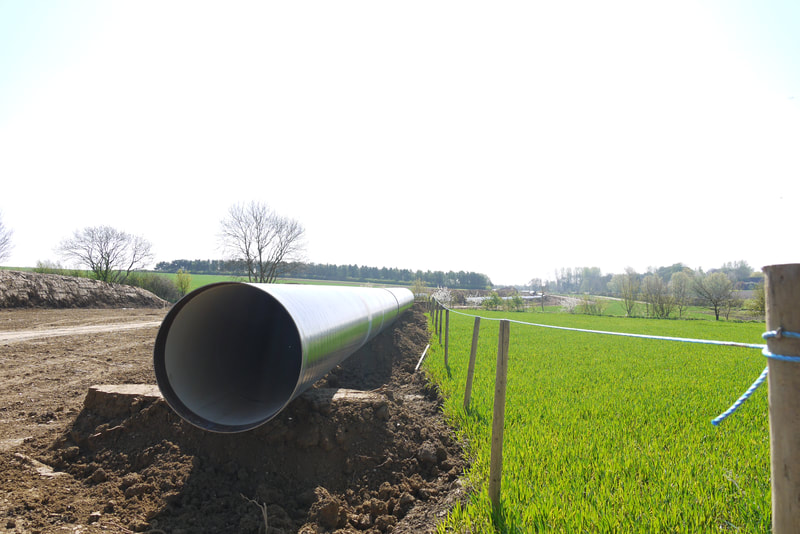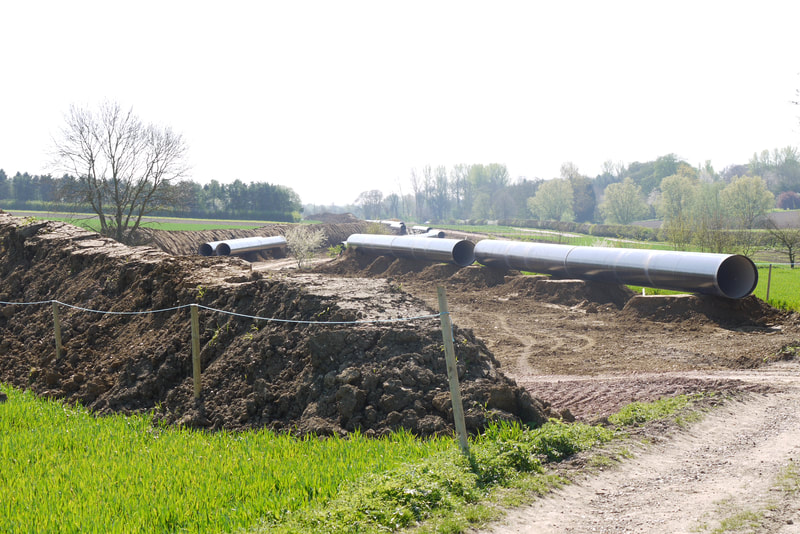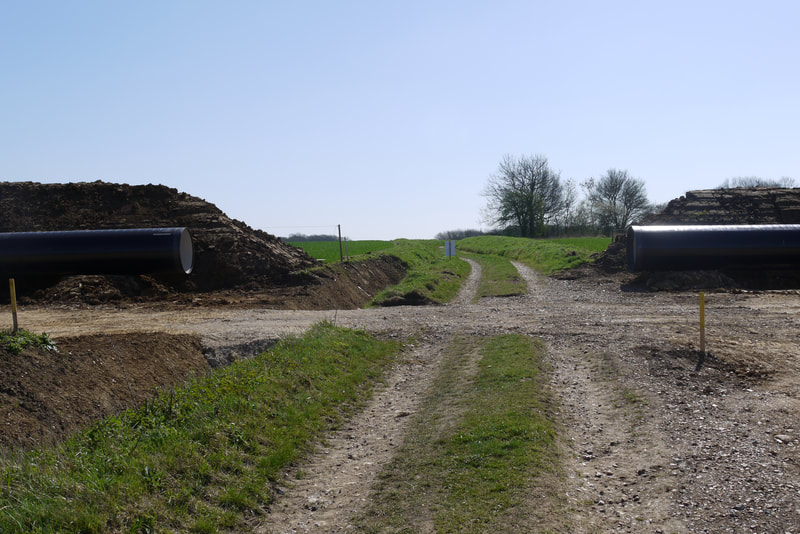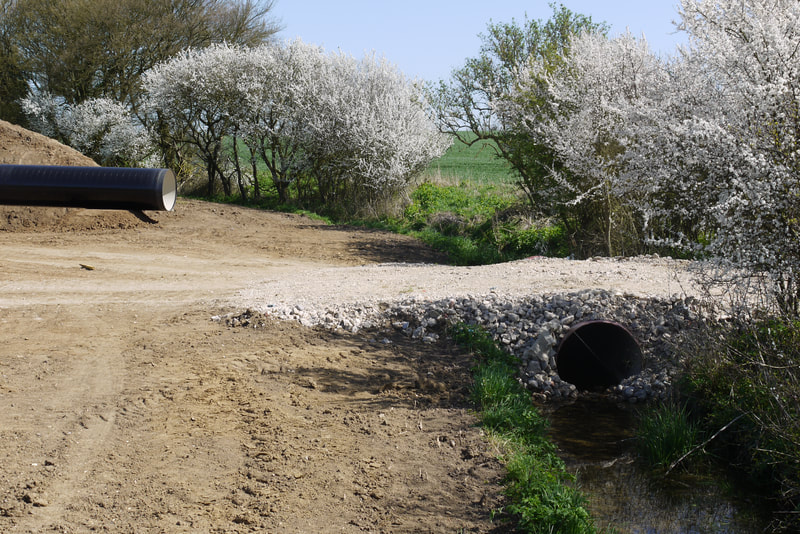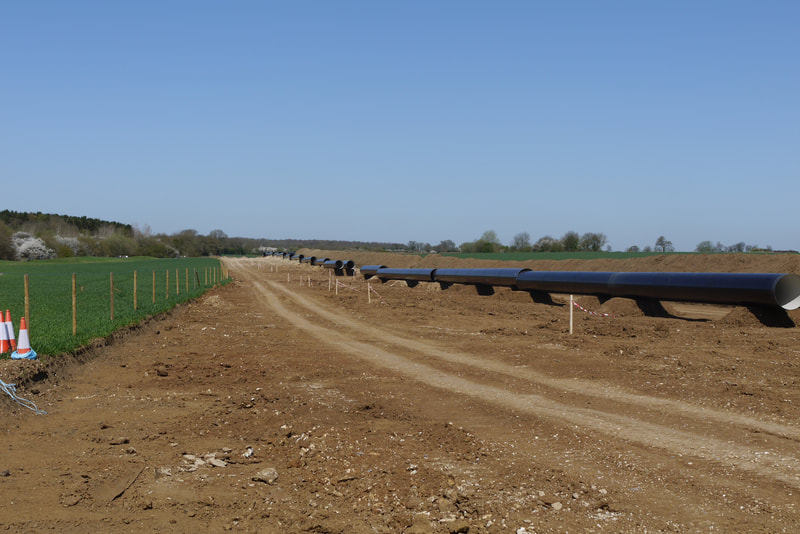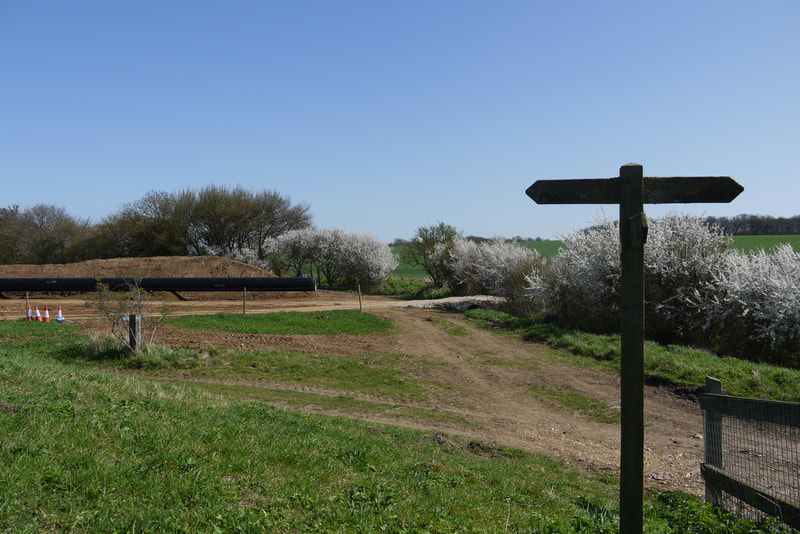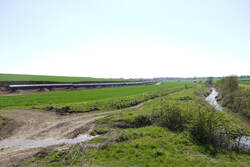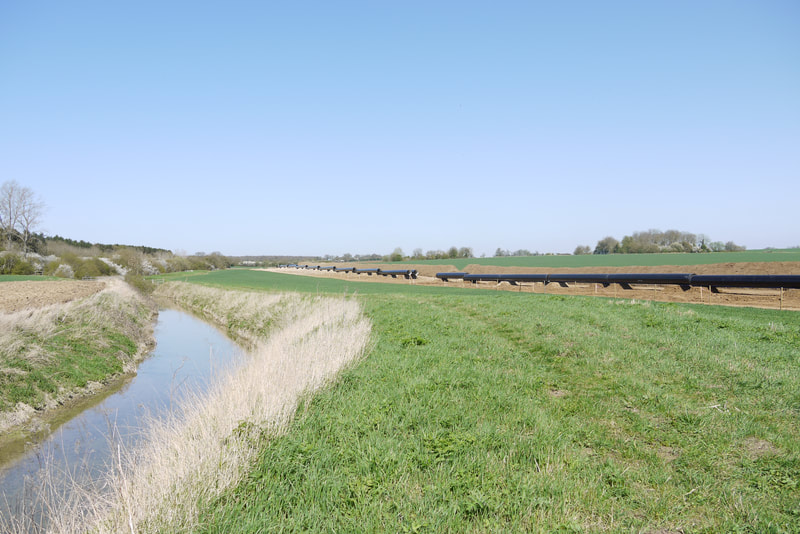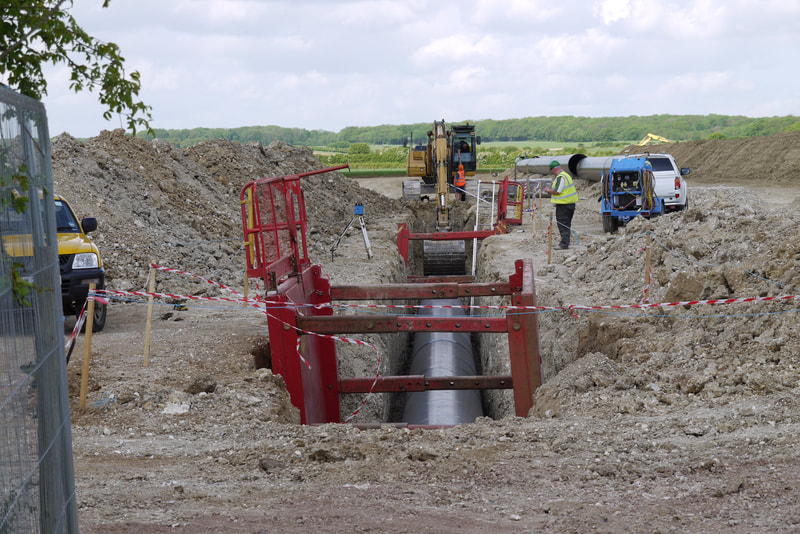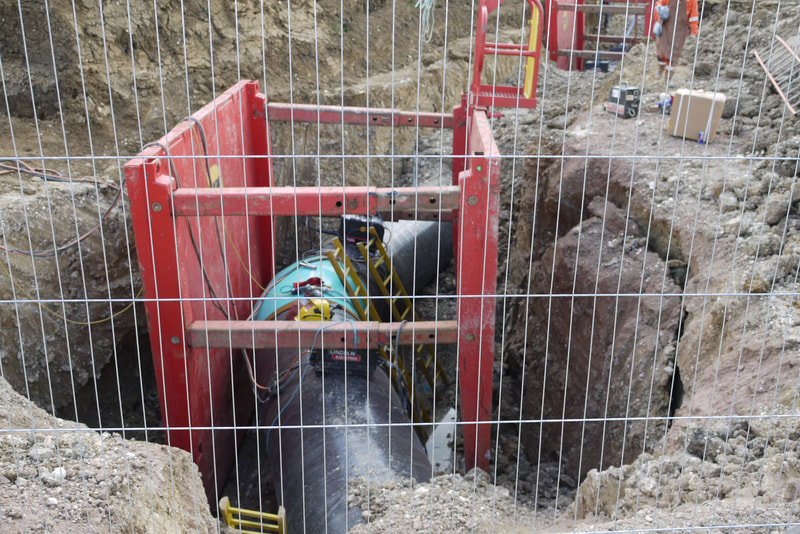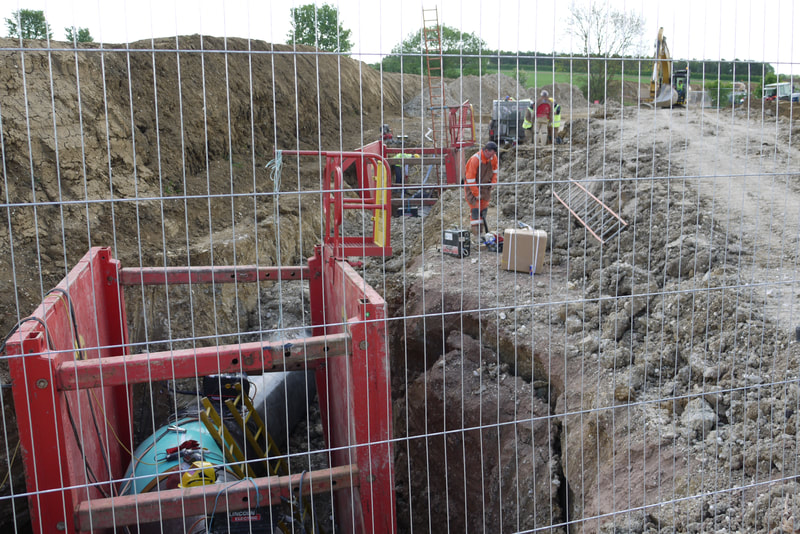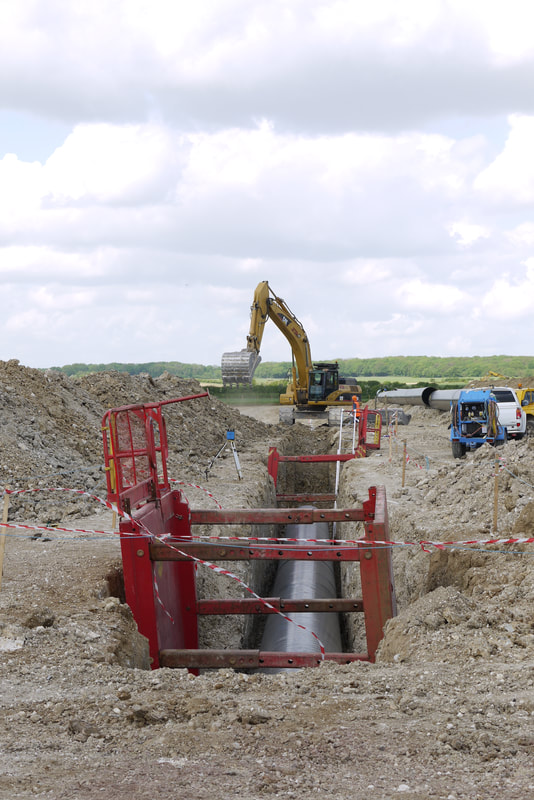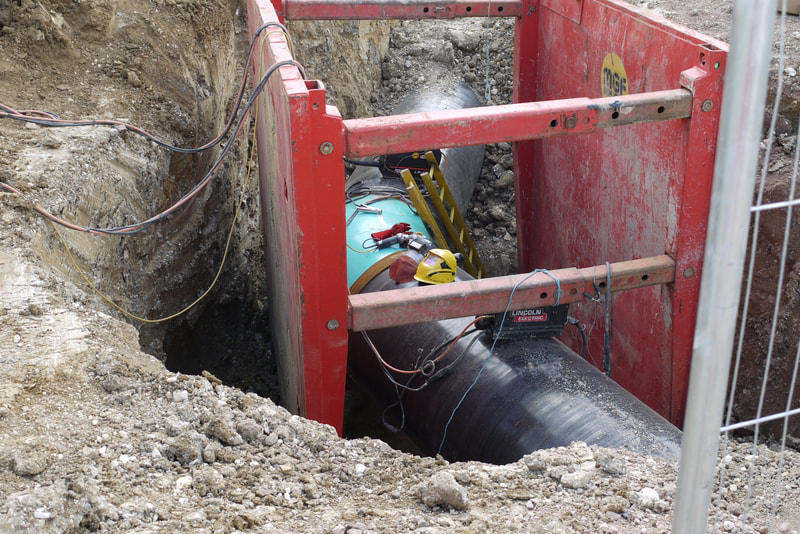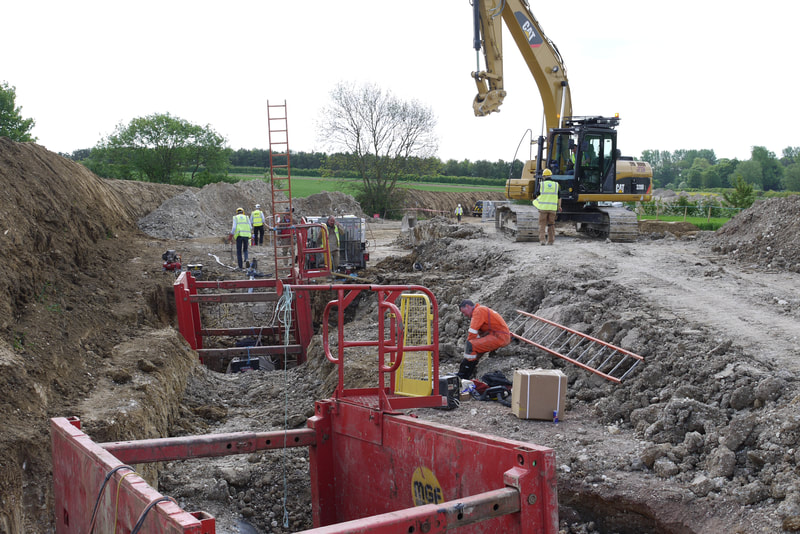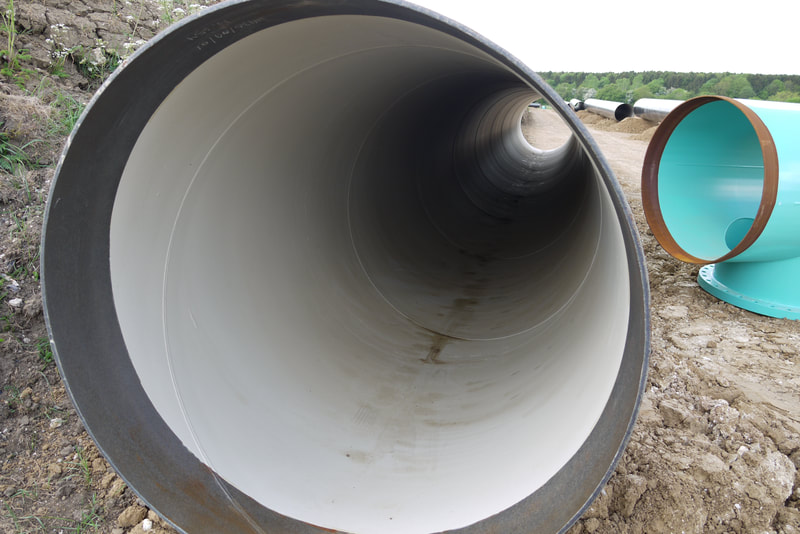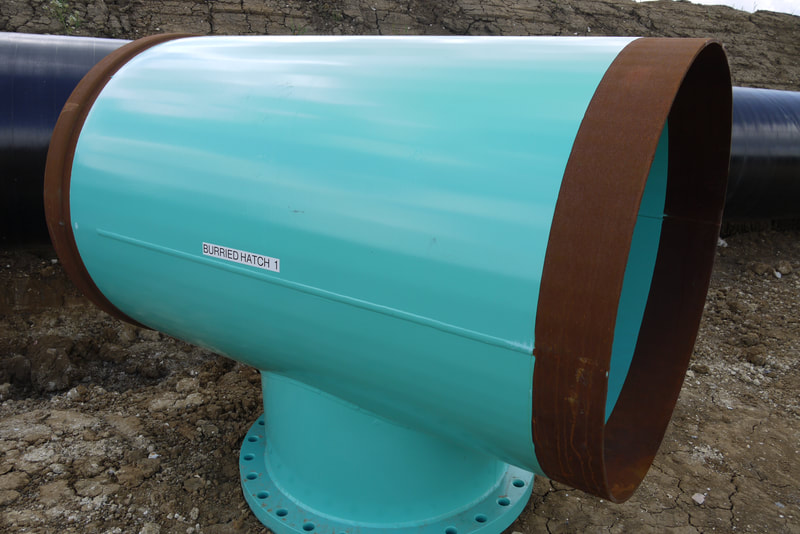The Ely-Ouse-Essex Water Transfer Scheme
In the summer there is often a marked difference between the volume of water in the River Stour as it crosses the end of Water Lane compared with what goes under the bridge by the Church. This is because between these two points the first recognised tributary joins the river. It is on the left bank and is known as Kirtling Brook. Where the Brook joins the river is known as the 'Kirtling Outfall'.
The reason for the dramatic difference in flow is that the brook is used to transfer water from the River Ouse system into the Stour and then on to the reservoirs in Essex. It is part of what is called the 'Ely Ouse-Essex Water Transfer Scheme'. Created following the 1968 Ely Ouse Essex Water Act and operational from 1972, the transfer scheme prevents spare water from entering the Wash and takes it to the Essex reservoirs that supply water to Chelmsford and Colchester. The reservoirs are managed by the Essex and Suffolk Water company, part of Northumbrian Water Group.
The water is first taken from the River Ouse or (Great Ouse) at the Blackdyke intake on the Cut-off Channel at Feltwell in Norfolk. From here a 20 km tunnel takes the water to Kennet near Newmarket in Suffolk. It then goes in a 14km pipeline to Kirtling Green. The pumping station at Kirtling Green pumps water in to Kirtling Brook and thus into the River Stour at Great Bradley. The river therefore usually has a good and steady flow of clean water under the bridge by the Church on Hall Lane inn Great Bradley. About 400 megalitres per day (400 Ml/d) is pumped from Kirtling.
The water then travels down the River Stour to Wixoe in Essex and is then abstracted for transfer to the Rivers Colne and the Pant. Abstraction of this water then takes place from these rivers for treatment and supply or for pumping to Abberton Reservoir near Colchester in Essex..90 Ml/d enters the reservoirs from the River. The Ely Ouse Scheme flow is supplemented by the Environment Agency's Stour Augmentation Groundwater Scheme (SAGS). This uses pumping stations along the river to abstract water from the chalk underground and put it into the river to be taken to the Essex reservoirs. This provides about 25 Ml/d.
Since 2012 this picture will have changed, as the Essex and Suffolk Water company have a proposal called the Abberton Reservoir Scheme in place. The overall aim of the Abberton Reservoir Scheme is to enlarge the capacity of the reservoir by 60%, and to provide enough water to fill it for future customer supply. Of interest to Great Bradley is the fact that the water that currently flows down the Kirtling Brook and in to the Stour, will be able to go in a new 15km pipeline from Kirtling to Wixoe instead. The aim of this is to ensure that enough water can be put into the system to reach the reservoirs in Essex but not damage the physical and biological environment of this part of the upper Stour valley.
The reason for the dramatic difference in flow is that the brook is used to transfer water from the River Ouse system into the Stour and then on to the reservoirs in Essex. It is part of what is called the 'Ely Ouse-Essex Water Transfer Scheme'. Created following the 1968 Ely Ouse Essex Water Act and operational from 1972, the transfer scheme prevents spare water from entering the Wash and takes it to the Essex reservoirs that supply water to Chelmsford and Colchester. The reservoirs are managed by the Essex and Suffolk Water company, part of Northumbrian Water Group.
The water is first taken from the River Ouse or (Great Ouse) at the Blackdyke intake on the Cut-off Channel at Feltwell in Norfolk. From here a 20 km tunnel takes the water to Kennet near Newmarket in Suffolk. It then goes in a 14km pipeline to Kirtling Green. The pumping station at Kirtling Green pumps water in to Kirtling Brook and thus into the River Stour at Great Bradley. The river therefore usually has a good and steady flow of clean water under the bridge by the Church on Hall Lane inn Great Bradley. About 400 megalitres per day (400 Ml/d) is pumped from Kirtling.
The water then travels down the River Stour to Wixoe in Essex and is then abstracted for transfer to the Rivers Colne and the Pant. Abstraction of this water then takes place from these rivers for treatment and supply or for pumping to Abberton Reservoir near Colchester in Essex..90 Ml/d enters the reservoirs from the River. The Ely Ouse Scheme flow is supplemented by the Environment Agency's Stour Augmentation Groundwater Scheme (SAGS). This uses pumping stations along the river to abstract water from the chalk underground and put it into the river to be taken to the Essex reservoirs. This provides about 25 Ml/d.
Since 2012 this picture will have changed, as the Essex and Suffolk Water company have a proposal called the Abberton Reservoir Scheme in place. The overall aim of the Abberton Reservoir Scheme is to enlarge the capacity of the reservoir by 60%, and to provide enough water to fill it for future customer supply. Of interest to Great Bradley is the fact that the water that currently flows down the Kirtling Brook and in to the Stour, will be able to go in a new 15km pipeline from Kirtling to Wixoe instead. The aim of this is to ensure that enough water can be put into the system to reach the reservoirs in Essex but not damage the physical and biological environment of this part of the upper Stour valley.
The pictures below show the pipeline being installed alongside the river as it flows down from Kirtling in 2014. The contract for supplying the pipes was awarded to FT Pipelines; FT Pipeline Systems and FT Ductile have been working together in supplying pipe to a major water scheme in the South East of England since April 2010. The Abberton Reservoir Enhancement Scheme involves increasing the capacity of the existing reservoir by raising the level of the water. This is necessary to meet increased demands for water over the coming years. The FT Group has recently supplied a range of pipe diameters and materials including ductile iron and steel pipe, fittings and associated pipeline products. The reservoir enhancement project involves re-routing 600mm, 900mm, 1000mm and 1200mm diameter pipelines (totalling nearly 4kms), and the associated works for several new pumping stations. Welded steel pipe has been chosen for the main pipe runs to remove the requirement for thrust blocks and to allow an epoxy internal lining to be used. Cement mortar was not a consideration because of tiger mussel infestation. External coating is the standard 3 layer polyethylene.
The pipes were manufactured in Spain or Turkey (In Turkey by Erciyas, with the bends/elbows/inspection hatches etc manufactured in France and in Spain by STS and utilise a double welded joint, with the bends/elbows/inspection hatches etc manufactured by Freeflow in the UK)
The pipes from Spain were shipped to Felixstowe Dock in loads of 140. Eight ship loads, would be required to cover the 16km pipeline. Lorries then deliver them to Farrans Depots along the pipeline route. The pipes are 4ft (1200mm) wide x 48ft (14.97m) in length. This equates to 67 pipes per Km or 110 per mile The delivery lorry can only carry 4 at a time - this means a minimum of 267 lorry journeys to cover the 16km length of the works.
The pipes were manufactured in Spain or Turkey (In Turkey by Erciyas, with the bends/elbows/inspection hatches etc manufactured in France and in Spain by STS and utilise a double welded joint, with the bends/elbows/inspection hatches etc manufactured by Freeflow in the UK)
The pipes from Spain were shipped to Felixstowe Dock in loads of 140. Eight ship loads, would be required to cover the 16km pipeline. Lorries then deliver them to Farrans Depots along the pipeline route. The pipes are 4ft (1200mm) wide x 48ft (14.97m) in length. This equates to 67 pipes per Km or 110 per mile The delivery lorry can only carry 4 at a time - this means a minimum of 267 lorry journeys to cover the 16km length of the works.
The archaelogical work that accompanied the pipeline provided the most comprehensive study of the area that had taken place to date. Over 800 worked flints were found, numerous ditches, pieces of pottery, a Roman settlement, three Roman coins and two human cremations. You can download a copy of the full report here.
| Kirtling_to_Wixoe_Pipeline_Report_1283_Vol1_Version3a.pdf | |
| File Size: | 6750 kb |
| File Type: | |
